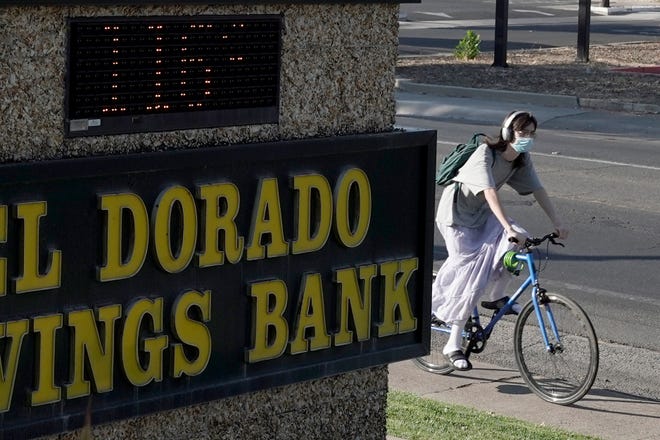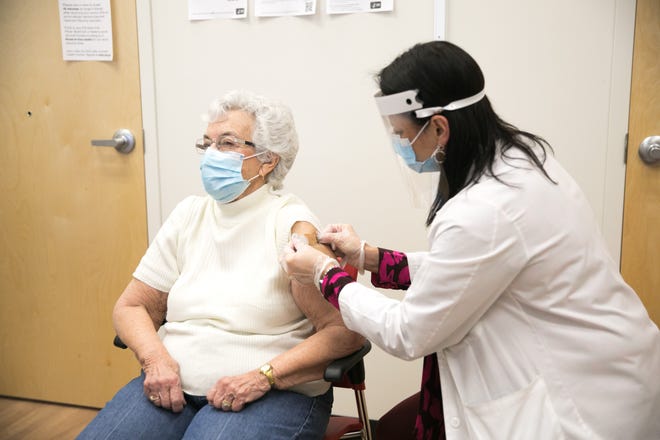
SAN FRANCISCO – Heat waves like the one California has been experiencing for the past week are the single most deadly natural disasters the nation faces each year, killing more people than hurricanes, tornadoes, floods, blizzards or extreme cold.
"We never think of heat waves as mass casualty events, but they are," said Kristie Ebi, a University of Washington epidemiologist who studies global health and extreme heat events.
Last year, tornados killed 104 Americans; floods, 146; hurricanes, 12; and lightning, 11, according to the National Weather Service. Meanwhile, the Centers for Disease Control and Prevention estimates each year 702 people in the U.S. die from heat – a number believed to be an undercount.
At least 289 people died in the heat dome that hit Washington, Oregon and California in June 2021 alone, according to the National Oceanic and Atmospheric Agency, At its peak, on June 28, there were 1,090 heat-related illness visits to emergency rooms in the region, according to the CDC.
"If it had been anything else, we'd have called it a mass casualty event," Ebi said.
The deaths are even more distressing because they're preventable. "There's no reason people should be dying in heat waves," she said.
California setting records:Rolling blackouts avoidedamid record-breaking heat wave; State issues another 'flex alert'
Here's why extreme heat can be so dangerous.
How heat can kill
Heat kills when core body temperature, meaning the internal organs, such as the heart, liver, brain and blood, rises. Older people and those with underlying conditions such as diabetes, heart problems or lung disease, are especially at risk.
To cope, the body tries to move the heat away from the core by increasing sweating. This can lead to dehydration, which decreases blood volume and increases strain on the cardiovascular system. Fluid can build up in the lungs, causing cause acute respiratory distress.
Heat exhaustion, the first phase
Heat exhaustion, the first phase, causes heavy sweat, nausea and possible vomiting and fainting. Blood vessels open up and the heart must work harder to pump. Fluid and salt are lost, leading to electrolyte changes.
Heat stroke can happen fast
Heat stroke begins when sweating ceases and the skin becomes dry and flushed. The gut can begin leaking toxins into the body, triggering an inflammatory response. Body temperature can reach as high as 106 degrees or more within 10 or 15 minutes.
As the internal temperature rises, cells begin to die, causing organ damage. Victims can experience confusion, coma and seizures.
If not checked, death can come within hours.
Even after cooling, heat-related issues can persist
Even if the victim gets to a cooler place, the damage can be lasting.
"Cognitive and organ dysfunction can persist for years following injury and render the injured individual at two to three-times greater risk of death for decades after injury," according to a report on the health risks of extreme heat in the medical journal The Lancet.
Why are heat deaths undercounted?
While hot temperatures kill through heat exhaustion and heat stroke, they can also contribute to deaths from heart attacks, strokes and cardiovascular disease, according to a report from the Environmental Protection Agency.
Those, rather than heat, can be what's listed on the death certificate, which is why official records tend to undercount them. Looking at just 61% of U.S. population in counties, a study in the journal Environmental Epidemiology estimated an average of 5,609 deaths attributable to heat each year.
What about heat and climate change?
A national website, Heat.gov, shows real-time data on excessive heat warnings. In the past 30 days, 61 million Americans were under heat alerts.
The problem is expected to worsen in coming years as climate change increases heat waves' frequency and temperatures. July 2021 was the hottest month ever recorded on Earth and US summers are becoming hotter and deadlier, according to NOAA.

Source link









